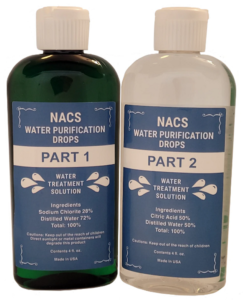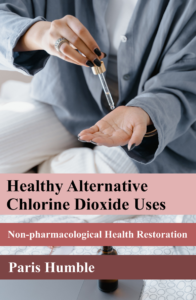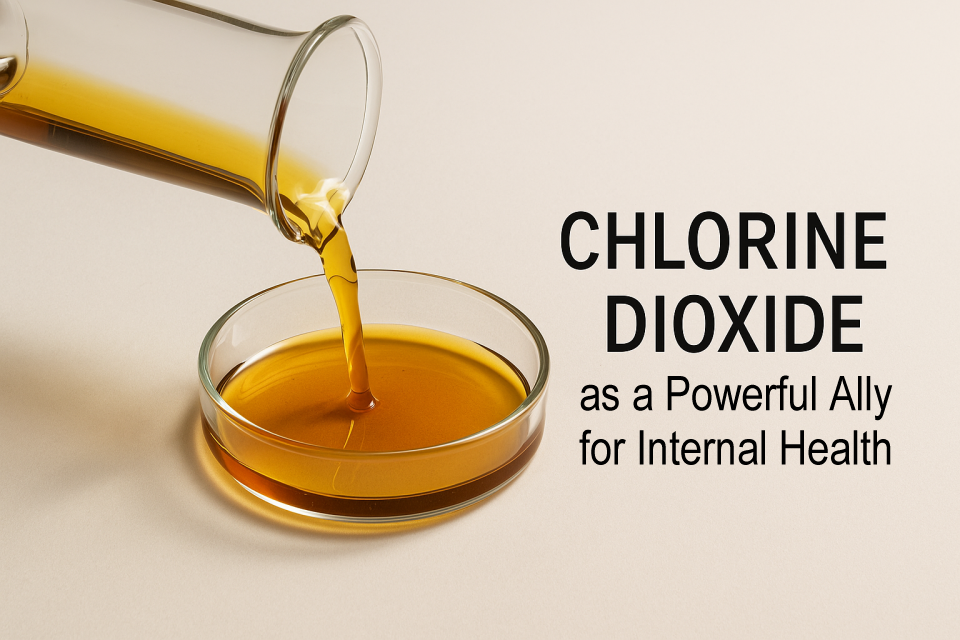For decades, chlorine dioxide has been recognized as one of the most effective disinfectants in the world. Its power to kill pathogens outside the human body, in water treatment, food sanitation, and medical facility disinfection, is well documented. Yet, what makes chlorine dioxide especially interesting is its potential when carefully applied inside the human body. Unlike chlorine, it does not create harmful byproducts, and when its work is done, it simply reduces to ordinary salt and oxygen. This makes it both effective and safe, with none of the cancer risks that have been linked to chlorine byproducts.
When used internally in precise and diluted amounts, chlorine dioxide demonstrates unique properties that allow it to clean the “human house” of harmful pathogens without damaging healthy cells or beneficial bacteria. This selectivity is one of the reasons researchers and practitioners continue to explore its role in supporting human health.
How Chlorine Dioxide Works
Chlorine dioxide kills pathogens through oxidation. Instead of attaching and binding to molecules the way chlorine does, chlorine dioxide works by stealing electrons. This simple process breaks down the cell walls of bacteria, viruses, and other harmful microorganisms. Once enough structural damage is done, the microbe can no longer function and dies.
Unlike chlorine, chlorine dioxide does not “halogenate” or form complex chemical chains that can create harmful byproducts. It is precise in its action, going after pathogens while leaving surrounding healthy tissue unharmed.
No Resistance Problem
A major issue in modern medicine is antibiotic resistance. Bacteria can evolve to defend themselves against drugs, creating dangerous “superbugs.” Oxidizing agents like chlorine dioxide, however, bypass this problem. Microorganisms lack biochemical defenses against oxidative attack. They cannot adapt to neutralize its electron-stripping action, which means chlorine dioxide remains effective even as microbes evolve. This makes it a long-term, reliable defense against pathogens.
Speed and Strength
Chlorine dioxide works very quickly, often within seconds to minutes. For comparison, many chemical disinfectants require an hour or more to fully take effect. This speed of action makes chlorine dioxide an attractive candidate for internal applications where rapid neutralization of pathogens is critical.
Its strength also lies in its efficiency at low concentrations. Even very small amounts are enough to eliminate dangerous microbes, because unlike chlorine or ozone, it isn’t wasted in unnecessary side reactions with other organic matter.

Selectivity: Targeting the Bad, Not the Good
Where chlorine and ozone often “burn through” anything organic in their path, chlorine dioxide is more discriminating. It seeks out and destroys harmful pathogens while leaving other organic matter intact. This is why it can clear away unwanted microbial invaders inside the body without harming beneficial cells or bacteria.
Stability Across pH Levels
One of chlorine dioxide’s overlooked strengths is its ability to remain effective across a wide range of pH values. Chlorine, by contrast, becomes much weaker in alkaline conditions. Chlorine dioxide does not break down when pH changes, making it equally effective in acidic, neutral, or alkaline environments. This adaptability allows it to function consistently in the varied conditions found throughout the human body.
Long-Lasting Protection
Because chlorine dioxide is selective and doesn’t react with every organic molecule it encounters, more of it remains available in the system after the initial disinfection. This residual effect helps keep pathogens from returning. Even small leftover amounts remain highly effective, maintaining protection over time.
Gentle on the Body
Another important advantage is its lack of harmful byproducts. Chlorine dioxide ultimately breaks down into oxygen and salt—two natural, harmless substances. Chlorine, by contrast, often leaves behind trihalomethanes (THMs) and other halogenated byproducts that are known carcinogens. This key difference is why the U.S. Environmental Protection Agency (EPA) recommended chlorine dioxide over chlorine for potable water treatment as early as 1983.
Additional Benefits
- Corrosion-free: At proper levels, chlorine dioxide does not corrode tissues or damage metals. In fact, it breaks down biofilms (slimy coatings where bacteria hide), making it useful for eliminating chronic infections.
- Eco-friendly: Lower doses are required compared to other disinfectants, meaning less chemical burden on both the body and the environment.
- Cost-effective: Though chlorine dioxide may seem more expensive than chlorine at first glance, its potency, longevity, and safety make it more economical in the long run.
Chlorine Dioxide: A Safe, Selective, and Strong Option
Chlorine dioxide stands out as a pathogen-killer that works quickly, effectively, and without collateral damage to the body. It is resistant to microbial resistance, selective in its action, stable across pH ranges, and leaves behind nothing but harmless salt and oxygen. While its external applications are already celebrated worldwide, its potential inside the human body may represent a breakthrough in affordable, safe, and powerful health support.

In a world where antibiotic resistance is a growing threat and chemical byproducts of traditional disinfectants pose long-term health risks, chlorine dioxide deserves closer attention. It could very well be the molecule that helps us rethink medicine’s future.
Comparison of Chlorine Dioxide, Chlorine, Ozone, and Antibiotics
| Feature | Chlorine Dioxide (ClO₂) | Chlorine (Cl₂) | Ozone (O₃) | Antibiotics |
| Mode of Action | Oxidation via electron transfer; breaks down pathogen cell walls without halogenation. | Oxidation + halogenation; creates chlorinated byproducts. | Very strong oxidant; reacts indiscriminately with organic matter. | Biochemical interference with cell functions (protein synthesis, DNA replication, etc.). |
| Selectivity | Targets pathogens specifically; spares healthy cells and beneficial bacteria. | Non-selective; reacts with most organic material. | Non-selective; high collateral damage to organics. | Targets bacteria but often affects gut flora and beneficial microbes. |
| Byproducts | Breaks down into oxygen and salt (NaCl) — harmless. | Creates trihalomethanes (THMs) and other halogenated compounds — carcinogenic. | Produces ozonides and aldehydes — irritating and potentially toxic. | Can leave toxic residues; gut imbalance; may cause allergic reactions. |
| Resistance Development | Pathogens cannot develop resistance to oxidative attack. | Microbes can adapt to survive chlorine exposure over time. | Similar to chlorine; microbes can adapt in biofilms. | Bacteria develop resistance (superbugs) through mutation and gene transfer. |
| Effectiveness Speed | Seconds to minutes at very low concentrations. | Requires longer exposure; reduced efficacy at higher pH. | Fast, but unstable and dissipates quickly. | Depends on drug type; often hours to days before results. |
| Stability Across pH | Stable and effective from acidic to alkaline ranges. | Loses potency in alkaline environments. | Less stable; decomposes rapidly in water. | Unaffected by pH, but dependent on metabolism and absorption. |
| Residual Protection | Long-lasting; residual activity prevents regrowth of microbes. | Short-lived; used up quickly by side reactions. | Very short-lived; dissipates rapidly. | Temporary; requires repeated dosing. |
| Impact on Body | Safe when diluted; no harm to tissues at recommended levels. | Irritating to tissues; potential long-term carcinogenic risk. | Harsh and irritating; not safe for internal use. | May harm gut flora, cause side effects, and weaken immunity with overuse. |
| Cost-Effectiveness | Requires very small amounts; economical in long-term use. | Cheap upfront, but health/environmental costs are high. | Expensive, unstable, and impractical inside body. | Expensive (especially new antibiotics); costs rise with resistance issues. |
This makes it clear that chlorine dioxide is unique in being:
- Fast and effective at very low doses
- Non-carcinogenic, leaving only salt and oxygen
- Impossible for pathogens to resist
- Gentle on healthy cells
